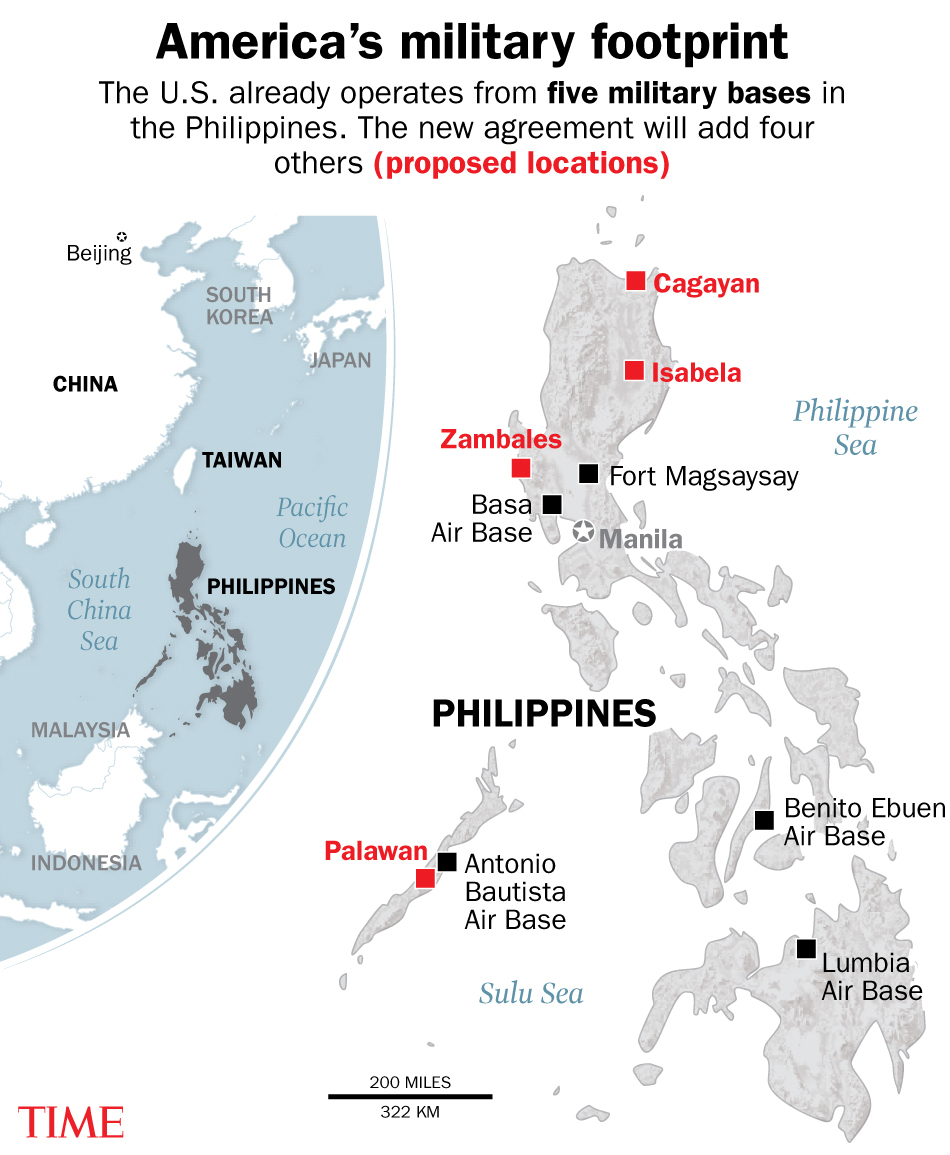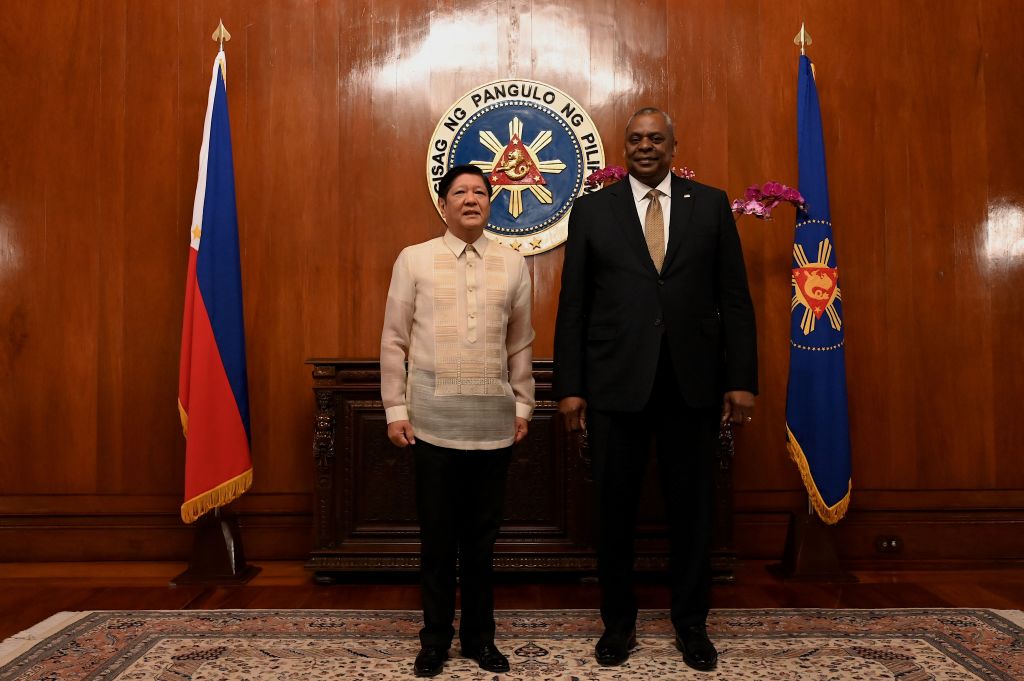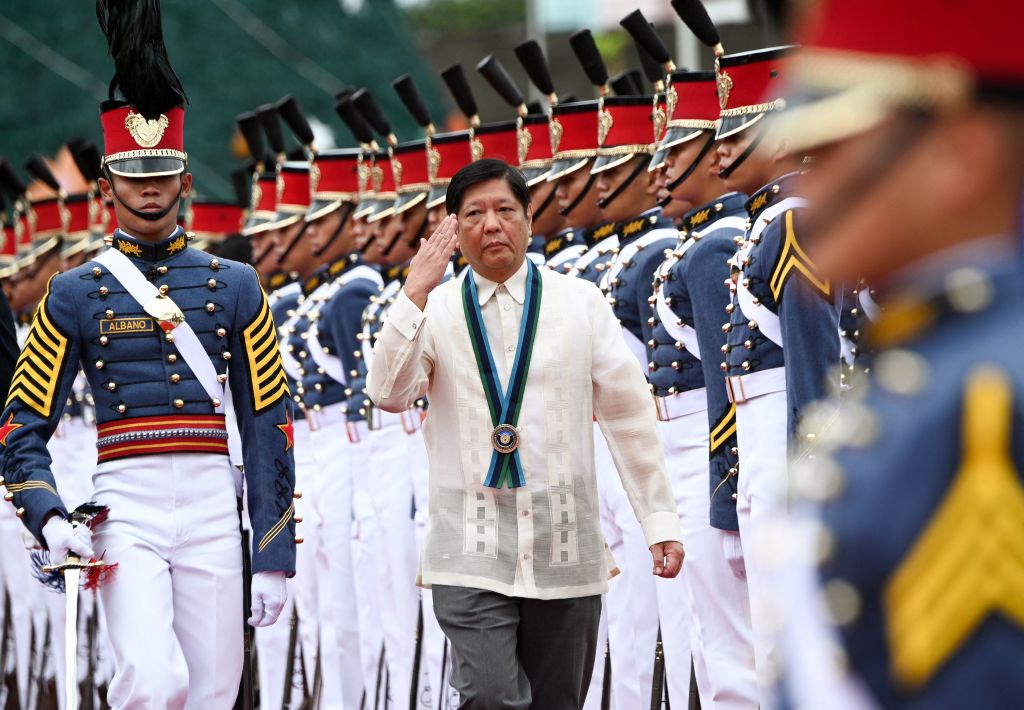It’s been more than 30 years since Philippine lawmakers moved to end the permanent U.S. military presence in the country. Previously, the U.S. operated two major bases, but many Filipinos saw the bases as a legacy of U.S. colonialism, and wanted to assert their independence.
Now, the Philippines is inviting the U.S. to increase its military footprint in the country again—giving access to four new military bases amid rising tensions with China, the two countries announced Thursday.

The increased access to more bases “will make our alliance stronger and more resilient, and will accelerate modernization of our combined military capabilities,” the U.S. Defense Department said in a Feb. 1 statement. There are currently about 500 U.S. military personnel in the Philippines.
The U.S. also said that the expanded base access would allow “more rapid support for humanitarian and climate-related disasters in the Philippines” as well as foster economic growth through foreign investments and job creation. While many Filipinos may welcome American presence as a strategic way to counter and deter Chinese influence and incursions, others may still be wary of the social implications of granting the U.S. military so much power on their land.
U.S. Defense Secretary Lloyd J. Austin III said at a news conference the development was a “big deal” but stressed that the deal did not mean the U.S. was reestablishing permanent American bases on the archipelago. The U.S. formally ended its 94-year military presence in the area in the early 1990s, shutting down Clark Air Base and Subic Bay Naval Base after the Philippine Senate rejected a treaty that would extend American military presence in exchange for aid.

The locations of the additional military bases the U.S. will now have access to have not been publicly disclosed but the two countries had previously discussed new sites in the northern province of Cagayan, across the strait from Taiwan, and in Palawan and Zambales, according to the Associated Press.
The agreement also comes after last year’s election brought new leadership to the Philippines and helped solidify Filipino President Ferdinand “Bongbong” Marcos Jr.’s “radical shift in foreign policy,” says Diane A. Desierto, professor of law and global affairs at the University of Notre Dame.
His predecessor Rodrigo Duterte had a much more anti-U.S. and pro-China stance; Duterte previously threatened to kick the U.S. military out of the country, but reversed course as a “concession” for vaccine donations. “It signals that the current president is interested in a balancing policy that recalls the long history of strategic cooperation between the United States and the Philippines,” Desierto says.
Military implications
The U.S. has been focused on containing China’s expansion and protecting Taiwan—so its increased presence in Asia is likely to send a signal to the regional superpower. “Because of U.S. presence, China has to be a lot more delicate in where it steps because obviously Chinese and U.S. personnel cannot be involved in a military conflict,” Faulve-Montojo says.
Geographically, the Philippines is in a key strategic area for the U.S.. “That archipelago is guaranteed to give the United States a kind of strike capability that the base in Okinawa or the base in Thailand is unable to give,” Desierto says. “Its access to the main waterways in the South China Sea enables flexibility for U.S. troops and enables multiple theaters of engagement for the U.S., not just in Northeast Asia, but also Southeast Asia.”

